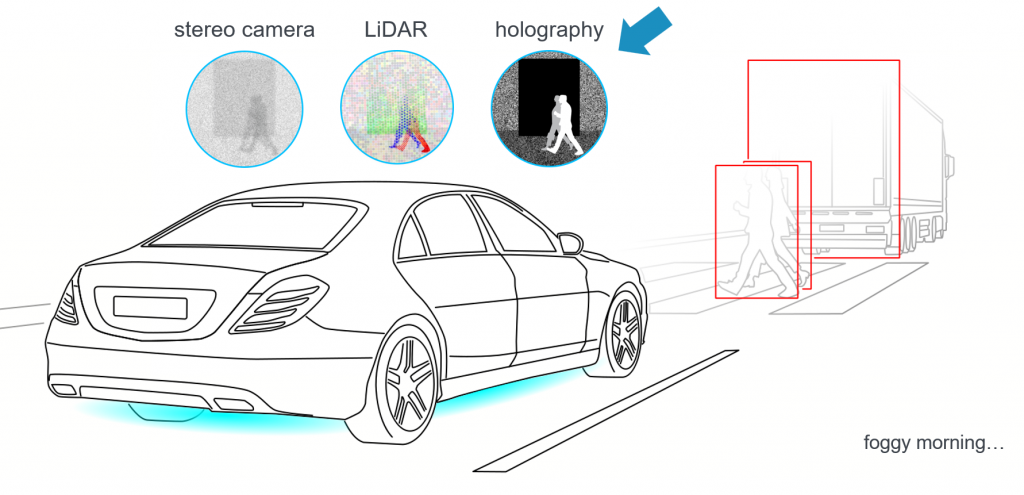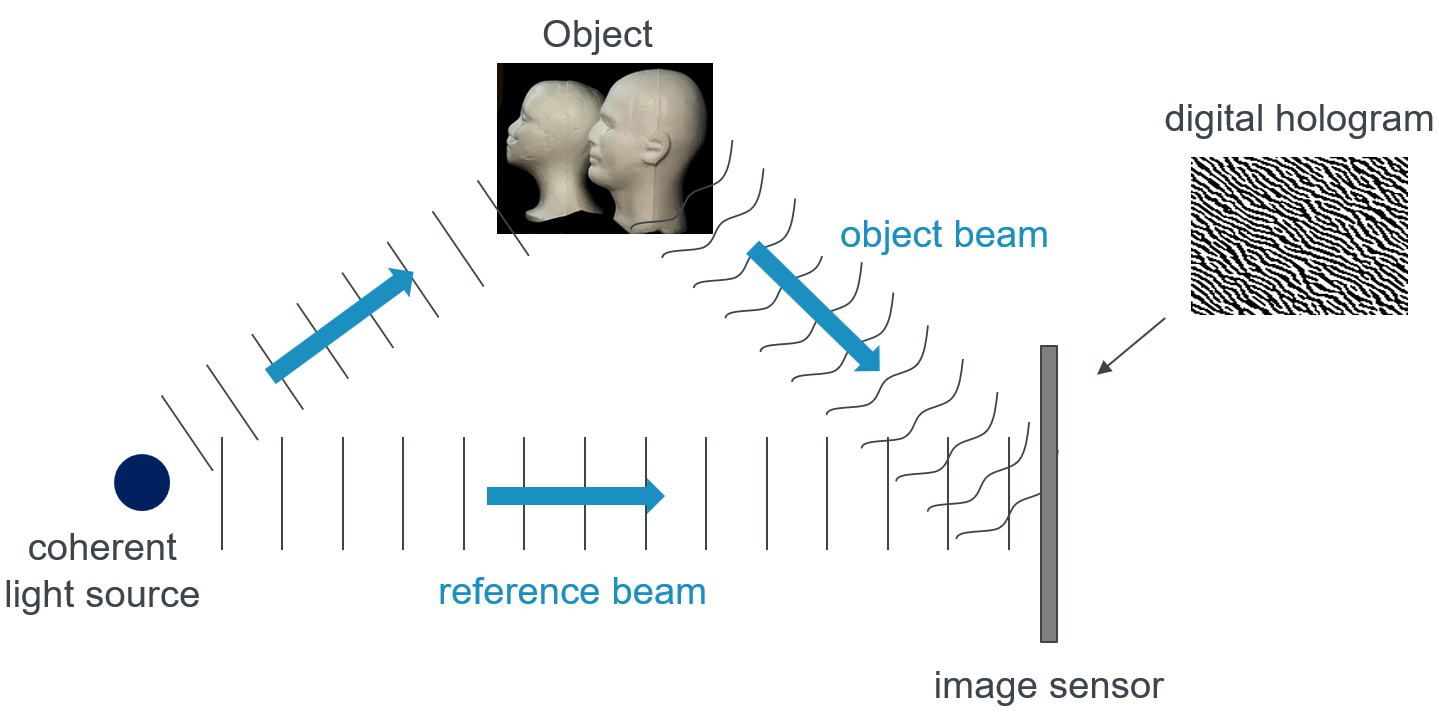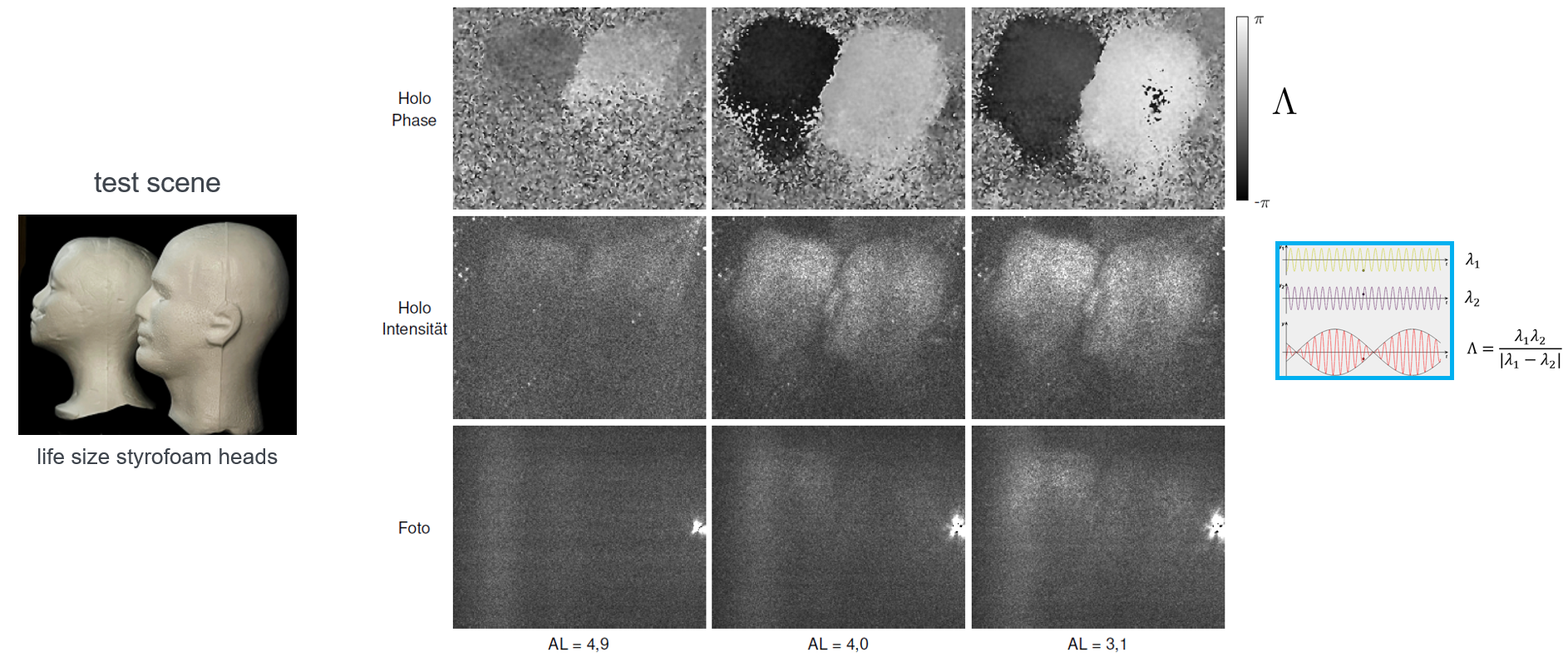Learn more about
Mobile 3D-imaging through fog
1. Objective: Machine vision
Autonomous vehicles must be capable of perceiving their surroundings in three dimensions to detect obstacles, estimate distances to other vehicles, and navigate safely through complex traffic situations. However, traditional sensor technologies like lidar, radar, and camera systems face significant challenges in heavy rain or fog, as scattering and absorption can severely compromise the reliability of environmental sensing. Therefore, new technologies need to be developed that can solve this problem more reliably.

2. Background
The problem: scattering and absorption of light
When light passes through media like fog or smoke, it undergoes scattering, where light rays are deflected in random directions by particles in the medium. This scattering prevents light from traveling in a straight line from the object to the camera, resulting in blurred images, reduced contrast, and loss of fine details. The extent of scattering depends on the size and concentration of the particles. Additionally, the medium can absorb light, with denser media absorbing more light, further decreasing image quality. Overall, scattering and absorption reduce visibility, causing distant objects to appear blurry or disappear entirely.
A possible solution: holographic imaging
Earlier research dating back to the 1960s has demonstrated that holographic imaging offers certain advantages when capturing images through scattering media like fog. Holography utilizes the interference of coherent light to record both the amplitude and phase of the wave field emitted by an object. Typically, the object is illuminated with laser light, and part of this light is combined with the light reflected from the object. This superposition produces an interference pattern—known as a hologram—from which the original wave field of the object can be reconstructed. The access to phase information allows for three-dimensional imaging of the object. Moreover, the physical effects resulting from the interference of coherent light provide a significant technological advantage over conventional methods when imaging through scattering media.

3. Lab experiment
Fog chamber
To conduct optical experiments in fog independent of local weather conditions, a test environment with controlled conditions is essential. This requires a closed space where high humidity can be maintained by introducing fog. Ultrasonic water atomization is particularly suitable for generating fog, producing droplet sizes between 2 and 50 μm, similar to natural fog. The primary purpose of this setup is to compare different imaging methods (photographic, holographic, time-gated) under controlled visibility conditions and to determine the achievable instrumental visibility for each method.

Optical setup
The experimental optical setup uses a pulsed laser with a wavelength of 1064 nm. The laser beam is split into object and reference beams, with the object beam expanded to illuminate the target in the fog chamber. The reference beam is coupled into a single-mode fiber and directed to a CCD camera, where it interferes with the reflected object light for imaging.

4. Results
The objective of the measurement is to capture the geometry and position of two test objects in dense fog. For comparison, photographic imaging with coherent illumination is also used in this experiment. The results show that reconstructed intensities from holography reveal more object structures at each fog density than the photographic images. Overall, the findings demonstrate that two-wavelength holography enables 3D measurement of an object scene through fog at distances significantly greater than those achievable with conventional camera-based imaging.

